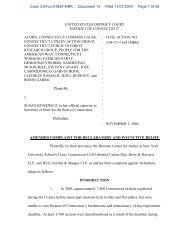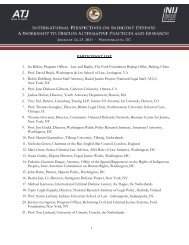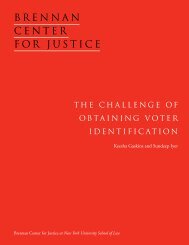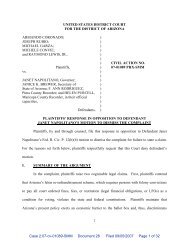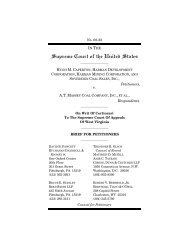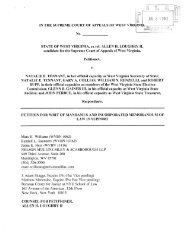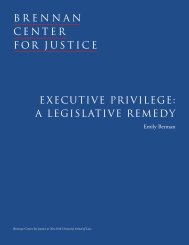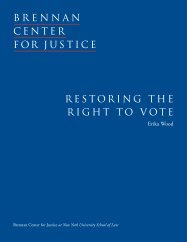THE NEW YORK STATE LEGISLATIVE PROCESS: AN ...
THE NEW YORK STATE LEGISLATIVE PROCESS: AN ...
THE NEW YORK STATE LEGISLATIVE PROCESS: AN ...
You also want an ePaper? Increase the reach of your titles
YUMPU automatically turns print PDFs into web optimized ePapers that Google loves.
50 <strong>THE</strong> <strong>NEW</strong> <strong>YORK</strong> <strong>STATE</strong> <strong>LEGISLATIVE</strong> <strong>PROCESS</strong>: <strong>AN</strong> EVALUATION <strong>AN</strong>D BLUEPRINT FOR REFORM<br />
extremely limited access to lobby meaningfully for legislation. Without an<br />
opportunity to convince the two leaders themselves, lobbying even other<br />
members of the Legislature is often inadequate to produce legislative action.<br />
Members of the public also have limited access to information about the role of<br />
their representatives in the legislative process. As demonstrated from the research<br />
conducted for this report, for example, it is impossible for voters to determine,<br />
even from the written records kept of Senate committee meetings, whether their<br />
Senator physically attended a committee’s vote or instead voted by proxy through<br />
the chairperson. Similarly, in the Assembly voters cannot know whether their<br />
Assemblyperson actually voted for a bill or whether their vote was “cast”<br />
automatically through the “empty seat” voting procedure. In both houses, the<br />
legislative party conferences – arguably the only locus of group discussion<br />
between members – remain entirely closed to public scrutiny and produce no<br />
publicly available records.<br />
All of these barriers to public access obscure from public view not only specific<br />
actions of legislators but also, and perhaps most importantly, the systemic<br />
shortcomings addressed in this report. As a result, the voters do not possess the<br />
information necessary to hold their elected representatives accountable, either for<br />
specific legislative outcomes or for the inadequate legislative process itself.<br />
Without a better understanding of the current legislative process, voters cannot<br />
advocate for systemic rules reforms that would improve the Legislature’s ability to<br />
represent voters’ interests.<br />
■ <strong>THE</strong> ABSENCE OF ACCOUNTABILITY<br />
The current legislative process in Albany prevents voters from holding their<br />
elected representatives accountable both for their actions with respect to specific<br />
legislation and for the shortcomings of the legislative process itself. This deficit<br />
has two related sources.<br />
First, most rank-and-file legislators are shut out of the legislative process and play<br />
an extremely limited role in developing and passing final legislation. They cannot<br />
hold committee hearings or produce committee reports on bills. They cannot<br />
control whether a bill reaches the floor for a vote. They cannot debate or amend<br />
a bill on the floor without contravening established practice and implicitly<br />
challenging party leaders. They play no role in reconciling bills from the two<br />
chambers because conference committees are virtually never used. In short, with<br />
few exceptions members of the Senate and Assembly are elected to legislate but<br />
cannot do so in any meaningful sense of the word. For this reason, voters cannot<br />
honestly hold their representatives accountable for the specific acts of the<br />
Legislature over which most legislators have little control.<br />
In turn, legislators occupy the unenviable position of either objecting to the legislative<br />
process and alienating the leaders of their own party or short-changing



